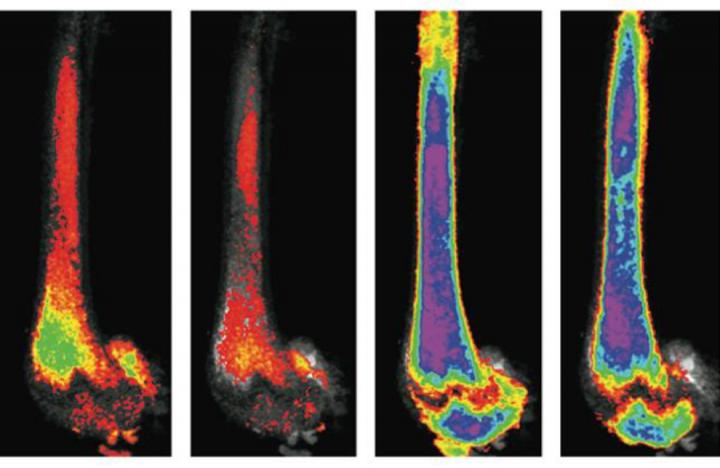Study by The Michael J Fox Foundation for Parkinson’s Research looked at more than 160,000 diabetes patients and found a reduction in incidence of Parkinson’s disease among people taking certain anti-diabetic medications.

A type of drug used to treat diabetes may reduce the risk of developing Parkinson’s disease, according to a new study published in PLOS Medicine.
The research, led by the London School of Hygiene & Tropical Medicine, found that diabetes patients taking glitazone antidiabetes drugs (either rosiglitazone or pioglitazone) had a 28% lower incidence of Parkinson’s disease than people taking other treatments for diabetes who had never taken glitazones. [1]
Glitazones are a class of drug that activate the peroxisome proliferation-activated gamma (PPARγ) receptor, which is found inside cells in many different body organs. PPARγ activation by glitazones leads to reduced insulin resistance, which has been useful for treating people with diabetes, but the receptor has many other functions that have not been studied as thoroughly in humans.
Although the potential effect of glitazones on Parkinson’s disease had previously been demonstrated in rodents and in vitro, the authors believe this is the first study to show the relationship between glitazone use and incidence of Parkinson’s disease in humans. [2]
Continue Reading Below ↓↓↓
The study, which was funded by The Michael J Fox Foundation for Parkinson’s Research, looked at more than 160,000 diabetes patients in the UK. Researchers used electronic health records from the UK Clinical Practice Research Datalink to match 44,597 glitazone users with 120,373 people using other antidiabetic drugs. Glitazone users were matched by age, sex, GP practice, and diabetes treatment stage with up to five users of other diabetic treatments.
Patients were followed up from 1999 (when glitazones were introduced to treat diabetes) until 2013, to determine how many were diagnosed with Parkinson’s disease during that period.
The results showed a 28% reduction in incidence of Parkinson’s disease among people taking glitazones compared with those taking other antidiabetic treatments. Adjustments for risk factors associated with Parkinson’s disease (including smoking and head injury) had no impact on the findings.
The results suggest that the reduced risk of Parkinson’s disease was only associated with current treatment with glitazones, and that there is little or no longer lasting benefit if people have taken the drug in the past before stopping or switching to another medication.
Senior author Dr Ian Douglas from the London School of Hygiene & Tropical Medicine said: “We often hear about negative side effects associated with medications, but sometimes there can also be unintended beneficial effects.
“Our findings provide unique evidence that we hope will drive further investigation into potential drug treatments for Parkinson’s disease. It’s thought that around one in 500 people are affected by Parkinson’s, and to date no effective treatments have been found to directly tackle the neurodegenerative aspect of the disease.”
Dr Ruth Brauer, who worked on the study while at the London School of Hygiene & Tropical Medicine, [3] said: “Our results suggest that treatments which activate the PPARγ receptor in the same way as glitazones could be promising targets in future drug research. Although our study only looked at people with diabetes, we believe it’s likely that the protective effect of glitazones may also be seen in people without diabetes.”
The authors note that their study only included patients with diabetes who had not been diagnosed with Parkinson’s disease when they started taking glitazones, and therefore they cannot establish whether taking the drug slows or prevents the progression of the disease. They also highlight that glitazones have been associated with some serious side effects. [4]
The study was carried out in collaboration with researchers at UCL and Imperial College London.
Ruth Brauer, Krishnan Bhaskaran, Nishi Chaturvedi, David T Dexter, Liam Smeeth, Ian Douglas, Glitazone treatment and incidence of Parkinson’s disease among people with diabetes: a retrospective cohort study, PLOS Medicine. DOI: 10.1371/journal.pmed.1001854
Continue Reading Below ↓↓↓
[1] An incidence rate ratio (IRR) was calculated using conditional Poisson regression, adjusted for possible confounders. The incidence rate of Parkinson’s disease in the glitazone-using group was 6.4 per 10,000 patient years compared with 8.8 per 10,000 patient years in users of other antidiabetic treatments (IRR 0.72, 95% CI 0.60-0.87).
[2] The authors believe their study is the first population-based investigation of the relationship between treatment with glitazone drugs and the incidence of Parkinson’s disease. A recently published clinical trial into the effect of pioglitazone on the progression of Parkinson’s disease suggested that pioglitazone at the doses studied is unlikely to modify progression in early Parkinson’s disease. Pioglitazone in early Parkinson’s disease: a phase 2, multicentre, double-blind, randomised trial, The Lancet Neurology, DOI: http://dx.doi.org/10.1016/S1474-4422(15)00144-1
[3] Dr Ruth Brauer is now at King’s College London.
[4] Rosiglitazone was introduced to the market in 1999, but was eventually suspended due to cardiovascular safety concerns. However, late 2013 the FDA removed the prescribing and dispensing restrictions for rosiglitazone medicines that were put into place in 2010. Whilst pioglitazone use has waned due to concerns over the risk of bladder cancer, recent studies show that the association may be partly mediated by proteinuria testing.
Source: London School of Hygiene & Tropical Medicine








